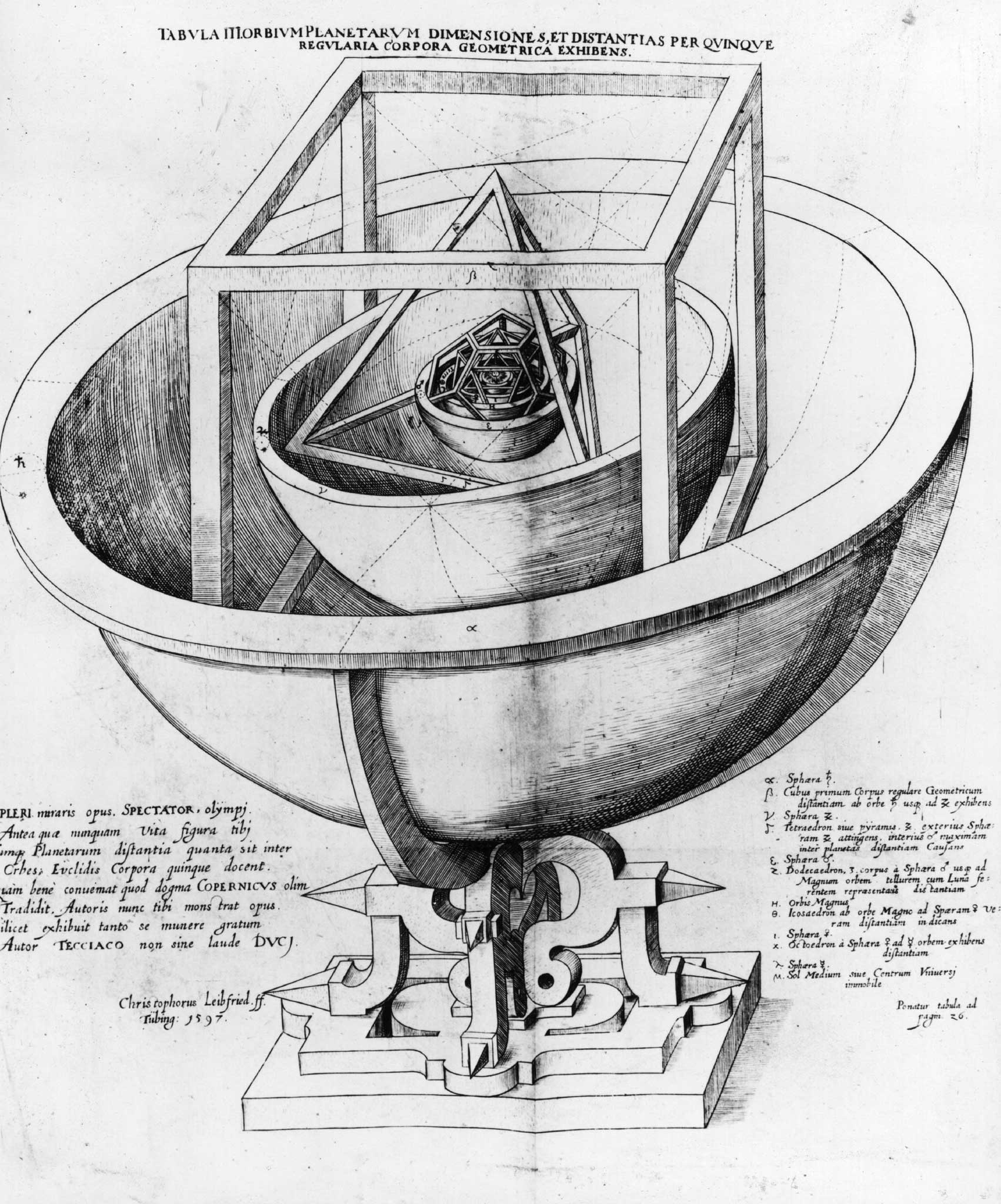Rhodri Marsden's Interesting Objects: Kepler's model of the universe

* Happy birthday, Universe! Tomorrow at 11am (Prussian time) we'll be celebrating the 5,990th birthday of pretty much everything, according to German mathematician and astronomer Johannes Kepler (1571-1630). He pinpointed 27 April, 3977BC as the date of Creation in his first scientific publication, a radical work entitled Mysterium Cosmographicum.
* Kepler had observed that Jupiter and Saturn appeared at the same point in the sky every 20 years, kicking off an intense period of calculation ("I'm almost consuming my eyes in computing") as he searched for a point of exquisite symmetry at which God could have put everything in place.
* Kepler's eventual model of the universe, as featured in the book, was so geometrically perfect that it could only have been divinely conceived. With six known planets (Mercury through Saturn), Kepler reckoned that the intervening spaces were represented by the five Platonic solids (cube, tetrahedron, dodecahedron, icosahedron and octahedron). He constructed a prototype universe from coloured paper, envisaging an eventual model made of silver which could double as a punchbowl.
* But various anomalies bothered Kepler. In the second edition (1621), he revised his estimate to 24 July 3993BC, when the Sun was at solar apogee and at the head of the constellation of Aries (the first sign of the Zodiac). This refinement still put him around 13.8 billion years out.
* Kepler wasn't wrong about everything, however. His discovery of elliptical planetary orbits and that the Sun wasn't just a source of heat were hugely important. He was honoured by NASA's Kepler mission, which launched on 7 March, 2009.
Join our commenting forum
Join thought-provoking conversations, follow other Independent readers and see their replies
0Comments